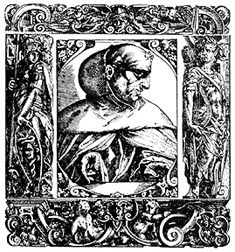Arsenic’s murky past
Arsenic has been known since ancient times. Due to the yellow colour of some arsenic compounds, it was of great interest to alchemists.
Alchemists were early scientists and mystics who studied chemistry and the properties of metals to try to make gold from other, less desirable metals. There were other aspects to their craft, such as discovering ways to extend life and cure diseases through the pursuit of instruments like the Philosopher’s Stone (of Harry Potter fame). Alchemists are credited with beginning the sciences of chemistry, metallurgy, toxicology and medicine.

- Unfortunately for the alchemists and other metal workers, working with metals is dangerous work when there are no safety rules for proper handling of metals! In ancient Greece, Hephaestus was the only Greek god who was physically imperfect, and he was the metalworker (actually, he was also the only Greek god who did any work at all!). The deformity of Hephaestus might reflect the effects of working with metals.
- Alchemists and blacksmiths using metals contaminated with arsenic and other toxic compounds were probably among the first people to suffer from occupational (work-related) exposure to toxins.

Arsenic has been called the “King of Poisons”. From the time of the Roman Empire, which was established at around 600 BC through the Middle Ages (5th – 15th C) (see Brigham Young University ) to the Renaissance (15th and 16th C) (see Web Museum ), it was a popular way to get rid of unwanted relatives or rivals. Sometimes the motives were political, sometimes personal. The use of arsenic to knock off inconvenient people was finally slowed down by advances in chemistry and forensic science. Once a test was developed to measure arsenic in tissue or body fluids in 1836, it was possible to prove the cause of death, making it much harder to get away with the crime.
It is hard to know for sure how much of the accounts of poisonings are true and how much was invention, but there are many infamous incidents of arsenic poisoning.
- During the Middle Ages, the Borgias (Pope Alexander VI, his son Cesare Borgia and his daughter Lucrezia Borgia) were accused of poisoning many people so that they could inherit money and property. It is true that they inherited property from many (dead) influential people, but there isn’t much proof of their crimes.
Cesare Borgia
- Some say that Napoleon Bonaparte (see Napoleon Series), French emperor from 1804 – 1814, was murdered by arsenic poisoning. He was in exile at the time, and there are traces of arsenic in samples of his hair. The source of the arsenic could have been intentional poisoning, but it is also possible that he was just exposed to arsenic from his environment and really died of stomach cancer, as others believe.
Accidental poisoning by arsenic has also occurred. For a long time, arsenic was used to make pigments (dyes or colours) that were used in paint, fabric and wallpaper. Paris Green is an example of a pigment that contains arsenic. It was found to be the cause of death of more than a thousand children who had suddenly died, and for no apparent reason, in Italy in the 1890’s. A chemist by the name of Gosio found that all the children who died had been living in rooms with wallpaper containing Paris Green, and there was mildew on the walls. Mold growing on the wallpaper released the arsenic in the pigment and formed arsine gas. Arsine is heavier than air, so it sinks to the floor. Children playing on the floor probably inhaled large doses of this highly toxic form of arsenic. Once this link was established, Paris Green was no longer used in wallpaper.
